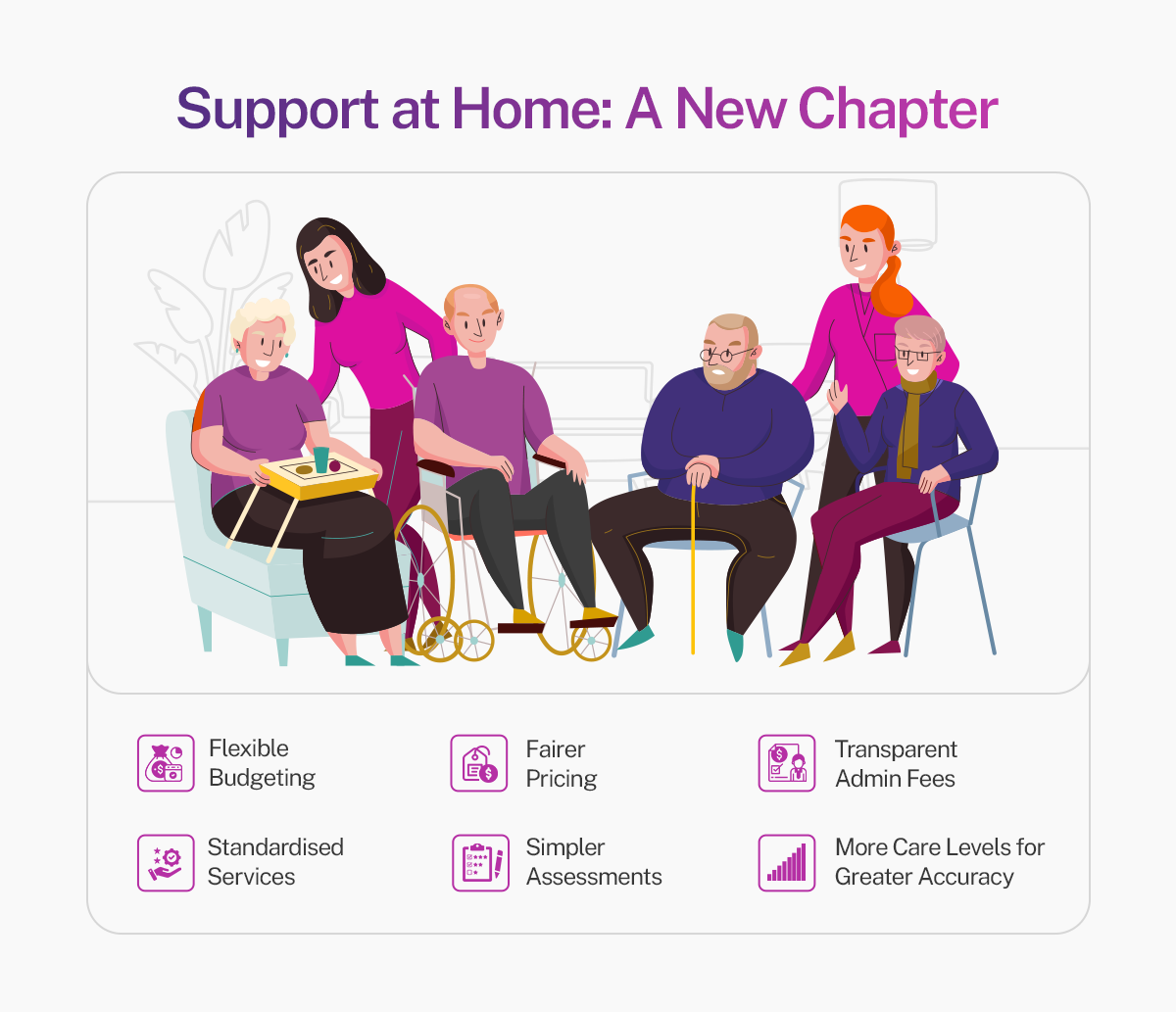For many older Australians, staying in their own homes, surrounded by familiar comforts, is deeply important. As individuals age, however, daily tasks can become challenging, making a little extra help essential.
In a sweeping reform of the nation’s aged care system, the Australian government has confirmed that by November 2025, the existing Home Care Package (HCP) system will be replaced by a new program: Support at Home (SAH). This move follows findings from the Royal Commission into Aged Care Quality and Safety, which uncovered inefficiencies in the current model.
What "Care at Home" Truly Means
It's about dignity and quality of life. Getting help with cleaning, cooking, personal care, transport, and even nursing. It's an integral step to staying independent.
Picture this: an 84-year-old woman named Margaret in Adelaide wakes up every morning in the house where she raised her family. She lives alone now, but she still walks out to the garden, prepares her tea, and reads the paper. What allows her to keep this daily rhythm? Weekly help from a support worker who assists with bathing, meal prep, and getting to the GP.
Stories like Margaret’s aren’t rare. They’re becoming more common. Staying at home is not only a personal preference—it’s a lifeline. Ageing in a familiar setting leads to better mental health, fewer hospital visits, and stronger community ties.
Staying home means better mental health, fewer hospital visits, and stronger community ties.
Understanding Home Care Packages (HCPs) Today
Right now, most seniors receive support through registered home care providers like My Companionship. They provide care through Home Care Packages, government-funded plans that offer four levels of care, ranging frombasic assistance to complexsupport, following a professional assessment known as the Aged Care Assessment Team (ACAT) Assessment.
Once approved, you can choose a provider to help with:
- Cleaning, laundry, and shopping
- Showering and dressing
- Nursing and allied health services
- Meals and transport
The Challenges Faced: Why Change is Needed
While designed to help, the existing Home Care Package system has often been a source of frustration for families. Many describe it as confusing and difficult to navigate, leading to unnecessary stress. Here are some of the key challenges that have prompted the upcoming reforms:
- Long Wait Times:Months, sometimes over a year, for help to get assigned to a home care package
- High admin fees: A significant portion of package funding often goes to provider overheads, such as care management and admin costs
- Inconsistent support: Many older Australians experience inconsistencies in the quality and reliability of their care. Issues such as missed appointments, unqualified staff, and poor communication between providers and clients have been reported.
A New Chapter: Introducing Support at Home (SAH)
Big reforms are coming. From November 2025, the Support at Home Program replaces HCPs. The goal: simpler, fairer, more accessible care.
Key reforms are:
1. Flexible Budgeting
Instead of one large annual package, funding will now be released quarterly. This gives you and your provider more control to adjust care and services as your needs change throughout the year. It’s designed to offer flexibility and peace of mind, particularly if your health or circumstances shift.
2. Fairer Pricing
The government will introduce price caps for most common home care services. This means you’ll pay the same rate for a service no matter which provider you choose, helping to reduce confusion and protect you from overcharging.
3. Transparent Admin Fees
Currently, a significant portion of your funds may go toward provider overheads. Under the new model, there will be clear limits and visibility on administrative and care management fees, so you can be sure more of your funding goes directly to your care, not to back-office costs.
4. Standardised Services
Now, seniors will use a national Support at home service list, ensuring that care services are consistent across Australia. Whether you're in Sydney or a rural town, you’ll have access to the same defined set of services, making the system more equitable and easier to navigate.
5. Simpler Assessments
Accessing care will start with a more straightforward and unified assessment process. The current system involves separate assessments for different programs, which can be confusing. SAH will streamline this into a single, consistent approach, making it easier to get the support you need sooner.
6. More Care Levels for Greater Accuracy
The current 4-tier Home Care Package system will be replaced by a new 8-level Support at Home structure. This allows for a more accurate match between your assessed needs and the level of support you receive, ensuring that care is better suited to your individual situation.

Your Next Steps: Preparing for the Transition
For those navigating these important changes, taking proactive steps now can ensure a smooth transition and continued access to essential support:
If you’re already receiving a Home Care Package:
There's no need to worry about losing your support. The government has committed to gradually transitioning you to the new system, so no immediate action is required on your part to maintain your current level of care.
If you’re new to the system or considering home care:
- The most crucial first step is to arrange an aged care assessment.
- You can easily initiate this process by using home care provider finders.
If you’re a provider:
- Stay on top of new regulations, and keeping your team informed will help ensure a smooth shift for both your organisation and your clients.
- Using technology is one of the most effective ways to stay updated and organised during this change. Care management software like: imploy or Asalty can help by simplifying rostering, tracking compliance, and managing payroll, making the transition to the new system much easier for providers and their teams.
Final Takeaway
The Support at Home program promises to be simpler, fairer, and more aligned with what older Australians truly need: the ability to live independently, with dignity, in their own homes.
The most important step? Start preparing now. Whether you're already receiving care or just beginning to explore your options, understanding the upcoming changes will empower you to make informed decisions and advocate for yourself or your loved ones.
Frequently Asked Questions (FAQs)
Will I need to reapply for care?
No. If you're already receiving a Home Care Package, the government will automatically transition your services to the new system.
Will I lose any services?
No. The level of support you receive will remain the same, and may even become more responsive to changes in your needs.
Will this cost me more?
Unlikely. The new system includes price caps and fee transparency measures aimed at protecting consumers from unexpected costs.







